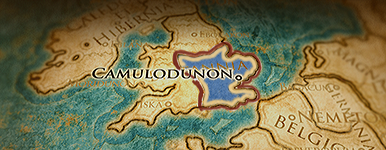

You might be surprised how much of a difference the two make for your guinea pig’s health. Read through to get a better understanding of the different lettuce. These nutrients will be further discusses in the following sections.

#ICEBERG VS ROMAINE FULL#
You can read the full nutritional data here: Romaine, Iceberg.
/iceberg-lettuce_annotated-33a4a5028b464c489c9049504612115a.jpg)
The data above was derived from the USDA, U.S Department of Agriculture. This chart contains some of the most important nutrients for guinea pigs. Showing you the differences between romaine and iceberg lettuce, in the guinea pig diet. Nutritional Differences of Iceberg and Romaine lettuceįirstly I have created a chart of the nutritional facts. Then finding out which is better for guinea pigs. That’s why this article will go over the differences between romaine and iceberg lettuce. But not all lettuce is actually healthy for your guinea pig. The answer to your question is that, yes, they can safely eat lettuce. This all comes down to the nutritional differences in the two lettuces. They both contain some important nutrients and minerals, but romaine is definitely the optimum lettuce for guinea pigs. Iceberg lettuce is very poor in nutritional value, while romaine is a great guinea pig food. One being that there are different kinds of lettuce, but overall I can say this. Compare that to iceberg, the least nutritious type of lettuce: one cup (shredded) contains 0.2 milligrams of beta-carotene, 0.2 milligrams of lutein and only one-third of the folate found in Romaine.There are a few things to consider when asking can guinea pigs eat lettuce. Per one cup serving (shredded), Romaine has 2.5 milligrams of beta-carotene, 1.1 milligrams of lutein and one-third of a day’s worth of folate. When it comes to getting the most vitamins, minerals and antioxidants per serving, here’s my rating of types of lettuce from most to least nutritious: Romaine, green leaf, butterhead (Boston, bib), red leaf, and finally, iceberg. Compared to red leaf, green leaf, butterhead (Boston and bib types) and iceberg, it delivers more folate, potassium, beta carotene and lutein. So, to answer your question, the most nutritious lettuce is Romaine.

In general, lettuce that is darker green in colour is a better source of nutrients than lighter coloured lettuce. That said, you can’t count on all types of lettuce to be a good source of all vitamins, minerals and antioxidants. Recipe: Three ideas for those who love salads full of flavour and textureĪdd these 10 nutrient-rich foods to your diet to promote longevity Green leaf lettuce vs. The condition results in progressive loss of visual sharpness and is the leading cause of severe vision loss in older adults. (Macular degeneration attacks the central part of the retina called the macula, which controls fine, detailed vision. Research shows that people who have high intakes of lutein from foods are less likely to develop cataract and macular degeneration.
#ICEBERG VS ROMAINE FREE#
Once consumed, lutein makes its way to the eye where it protects the retina and lens from free radical damage. Lutein is also an antioxidant that helps preserve our eyesight as we age. In fact, its antioxidant properties are thought to help prevent certain cancers and other diseases. Beta-carotene is a powerful antioxidant, protecting cells in the body from damage caused by free radicals. Lettuce is also a good source of two phytochemicals: beta-carotene and lutein.


 0 kommentar(er)
0 kommentar(er)
